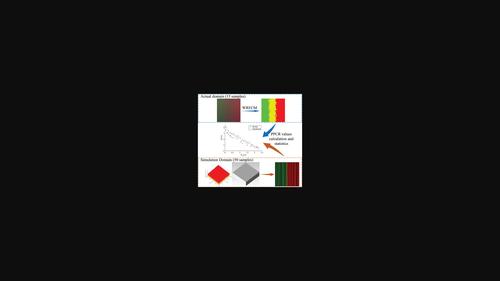当前位置:
X-MOL 学术
›
Adv. Theory Simul.
›
论文详情
Our official English website, www.x-mol.net, welcomes your feedback! (Note: you will need to create a separate account there.)
Grinding Surface Roughness Measurement Combined with Simulation Data and Transfer Learning
Advanced Theory and Simulations ( IF 3.3 ) Pub Date : 2024-03-03 , DOI: 10.1002/adts.202301100 Huaian Yi 1 , Ziqiang Feng 1 , Aihua Shu 2
Advanced Theory and Simulations ( IF 3.3 ) Pub Date : 2024-03-03 , DOI: 10.1002/adts.202301100 Huaian Yi 1 , Ziqiang Feng 1 , Aihua Shu 2
Affiliation

|
The surface‐roughness machine vision measurement method requires training numerous samples with uniform roughness values to construct a prediction model. Insufficient actual sample size will make the model lack generalization ability. So, a grinding surface‐roughness measurement method combined with simulation data and transfer learning is proposed. First, through surface simulation, inverse fitting, and three‐dimensional (3D) modeling, more realistic simulation samples are obtained, real samples are prepared, and a simulation imaging system and an actual imaging experiment to acquire surface images are designed. Second, the data distribution difference between the simulation domain and the actual domain through transfer component analysis and the use of the adjusted simulation‐domain data and its label to train a support vector regression model is adjusted. Finally, the model predicts the surface roughness of the uncalibrated actual‐domain sample. For shared features of transferable simulation images and actual images, using the high sensitivity of color information, image features are enhanced and a proportion of pure color region index is designed, strongly correlated within the domain but less differentiated between domains. The results show that the transfer learning prediction accuracy based on this index exceeds 90%, verifying the feasibility of the proposed method and providing a new improvement strategy for sample expansion in visual roughness measurement.
中文翻译:

磨削表面粗糙度测量结合仿真数据和迁移学习
表面粗糙度机器视觉测量方法需要训练大量具有均匀粗糙度值的样本来构建预测模型。实际样本量不足会导致模型缺乏泛化能力。因此,提出了一种结合仿真数据和迁移学习的磨削表面粗糙度测量方法。首先,通过表面模拟、反拟合和三维(3D)建模,获得更真实的模拟样本,准备真实样本,设计获取表面图像的模拟成像系统和实际成像实验。其次,通过传递分量分析来调整模拟域与实际域之间的数据分布差异,并使用调整后的模拟域数据及其标签来训练支持向量回归模型。最后,该模型预测未校准的实际域样本的表面粗糙度。针对可迁移模拟图像与实际图像的共有特征,利用颜色信息的高敏感性,增强图像特征,设计一定比例的纯色区域索引,域内相关性强,域间差异性较小。结果表明,基于该指标的迁移学习预测精度超过90%,验证了所提方法的可行性,为视觉粗糙度测量中的样本扩展提供了新的改进策略。
更新日期:2024-03-03
中文翻译:

磨削表面粗糙度测量结合仿真数据和迁移学习
表面粗糙度机器视觉测量方法需要训练大量具有均匀粗糙度值的样本来构建预测模型。实际样本量不足会导致模型缺乏泛化能力。因此,提出了一种结合仿真数据和迁移学习的磨削表面粗糙度测量方法。首先,通过表面模拟、反拟合和三维(3D)建模,获得更真实的模拟样本,准备真实样本,设计获取表面图像的模拟成像系统和实际成像实验。其次,通过传递分量分析来调整模拟域与实际域之间的数据分布差异,并使用调整后的模拟域数据及其标签来训练支持向量回归模型。最后,该模型预测未校准的实际域样本的表面粗糙度。针对可迁移模拟图像与实际图像的共有特征,利用颜色信息的高敏感性,增强图像特征,设计一定比例的纯色区域索引,域内相关性强,域间差异性较小。结果表明,基于该指标的迁移学习预测精度超过90%,验证了所提方法的可行性,为视觉粗糙度测量中的样本扩展提供了新的改进策略。



























 京公网安备 11010802027423号
京公网安备 11010802027423号